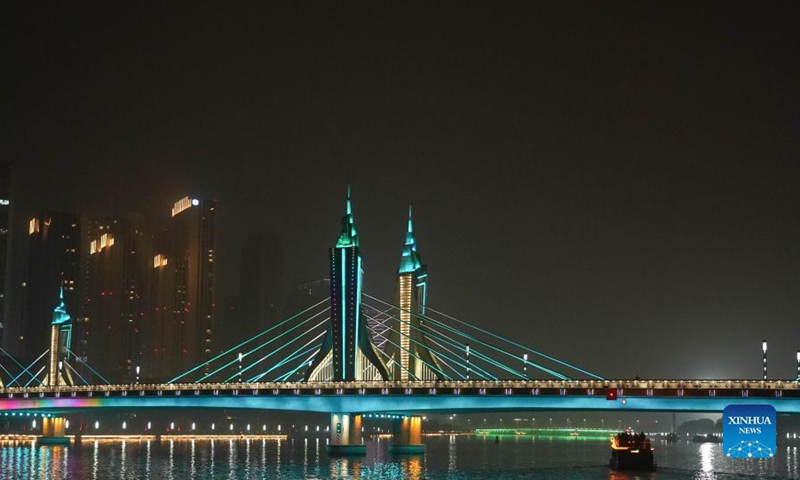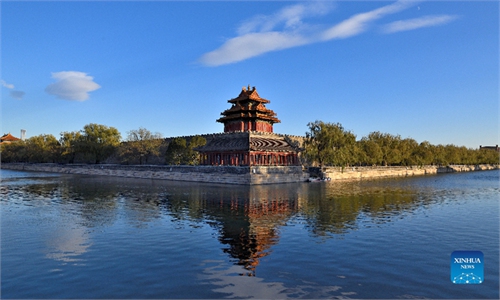
Photo taken on Oct. 9, 2021 shows the North Canal in Tongzhou District of Beijing, capital of China. (Xinhua/Chen Zhonghao)
Beijing's sub-center in Tongzhou district has earmarked 426 projects with total fixed-asset investment of 100 billion yuan ($15.81 billion), administrators of the sub-center announced on Monday, amid a nationwide infrastructure spending drive.
The sub-center, where the Chinese capital will move many of its functions, together with the Xiongan New Area will form two new "wings" of Beijing. They have announced projects that include Asia's largest underground traffic terminal as part of a broad measure to stabilize investment and ensure a stellar performance in the first quarter.
A total of 27.4 billion yuan has been earmarked for 47 high-tech projects in the sub-center, 7.6 billion yuan will be spent on 63 green development projects and 2.3 billion yuan is slated for 23 projects underpinning the integration of Beijing, Tianjin and North China's Hebei Province.
Meng Jingwei, district head of Tongzhou, told a press conference on Monday that 78 percent of the total investment has been allocated for major designated projects and a total of 248 projects worth 18 billion yuan will be launched during the first quarter, in an effort to ensure stable fixed-asset investment.
The infrastructure projects include mass transit lines and roads leading up to Beijing's Universal Beijing Resort, schools, hospitals and welfare housing projects. A transportation hub in the sub-center, which will be the largest underground comprehensive transportation hub in Asia, will also see 40 percent of total construction completed by end-2022.
A 148-kilometer inter-city railway between Beijing and Tangshan, a city famous for steelmaking in Hebei Province, will also be completed and become operational in 2022.
The State Council, China's cabinet, released a guideline in November 2021 to promote the high-quality development of Beijing's sub-center and ease the non-capital functions of Beijing. It also aims to support Beijing's sub-center in developing its digital economy.
As China tackles the so-called triple economic pressure from shrinking demand, supply shocks and weakening expectations, 12 provinces and municipalities in China had announced 16,079 key investment projects for 2022 with total investment of more than 25 trillion yuan as of February 16, according to the Securities Daily.
Analysts with Guangzhou-based GF Securities predicted that increased spending will cause infrastructure investment to jump to 8 percent during the first half of 2022.



